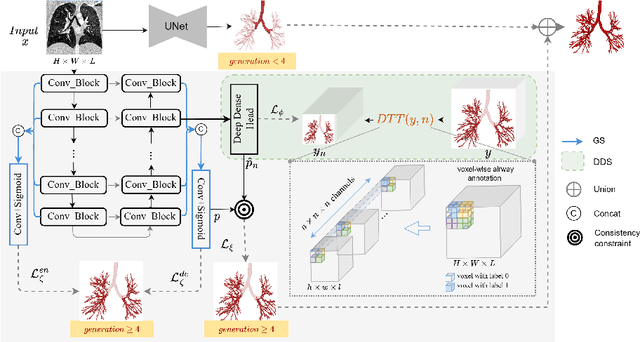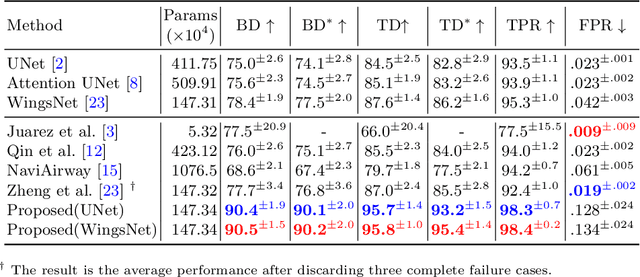GDDS: Pulmonary Bronchioles Segmentation with Group Deep Dense Supervision
Paper and Code
Mar 16, 2023



Airway segmentation, especially bronchioles segmentation, is an important but challenging task because distal bronchus are sparsely distributed and of a fine scale. Existing neural networks usually exploit sparse topology to learn the connectivity of bronchioles and inefficient shallow features to capture such high-frequency information, leading to the breakage or missed detection of individual thin branches. To address these problems, we contribute a new bronchial segmentation method based on Group Deep Dense Supervision (GDDS) that emphasizes fine-scale bronchioles segmentation in a simple-but-effective manner. First, Deep Dense Supervision (DDS) is proposed by constructing local dense topology skillfully and implementing dense topological learning on a specific shallow feature layer. GDDS further empowers the shallow features with better perception ability to detect bronchioles, even the ones that are not easily discernible to the naked eye. Extensive experiments on the BAS benchmark dataset have shown that our method promotes the network to have a high sensitivity in capturing fine-scale branches and outperforms state-of-the-art methods by a large margin (+12.8 % in BD and +8.8 % in TD) while only introducing a small number of extra parameters.
 Add to Chrome
Add to Chrome Add to Firefox
Add to Firefox Add to Edge
Add to Edge